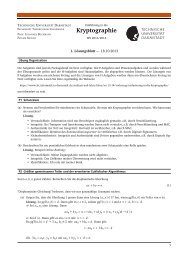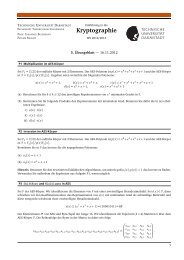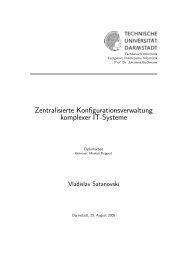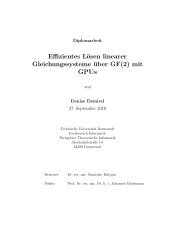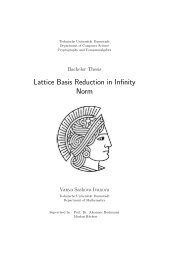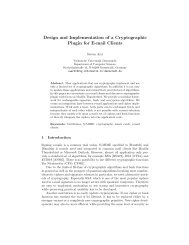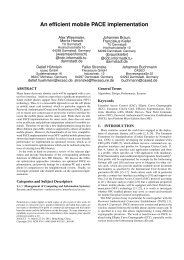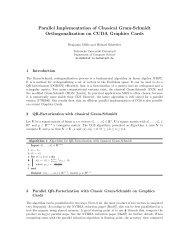Merkle Tree Traversal Techniques - CDC
Merkle Tree Traversal Techniques - CDC
Merkle Tree Traversal Techniques - CDC
Create successful ePaper yourself
Turn your PDF publications into a flip-book with our unique Google optimized e-Paper software.
3.4 Fractal tree representation and traversal<br />
In 2003 a group of people introduce a new traversal technique with better space and time<br />
complexity than any other published algorithm [JLMS03]. Most important about it are<br />
two things. The so called fractal traversal is very different from the other two described<br />
techniques in this thesis and has the advantage to allow tradeoffs between storage and<br />
computation (this will be explained more thorough in the comparison chapter after the<br />
algorithm descriptions). We will just mention here that the fractal algorithm requires a<br />
2log N / log log N hash function evaluations for every output (in its<br />
( )<br />
maximum of ( ) ( )<br />
2<br />
worst case) and maximum storage of 1.5log ( ) / log log(<br />
)<br />
25<br />
( )<br />
N N hash values. In this part<br />
we are going to give a brief description of this <strong>Merkle</strong> tree traversal technique, but first<br />
we need to introduce some notations used in it. As usual, we consider a <strong>Merkle</strong> tree T of<br />
height H and 2 H leaves.<br />
3.4.1 Notations: The basic idea of the fractal algorithm is that it uses subtrees of T<br />
instead of single nodes (like the authentication nodes in the previous<br />
algorithm). That is why we need to choose a fixed height h (1≤h≤H− 1)<br />
and we call it subtree height (for our algorithm we need h to be a divisor of<br />
H ). Let n be an arbitrary node in T . We say that n has altitude h if the<br />
length of the path from n to the nearest leaf is equal to h . For a node n in our<br />
tree we can define an h -subtree at n , which is exactly the subtree that has n<br />
for root and has height h . As h divides H , we can also define L to be the<br />
number of levels of h -subtrees in T (thus L= H / h).<br />
So if the root of a<br />
subtree has altitude ih for some i= 1,2,..., H we say that the subtree is at level<br />
H ih<br />
i (there are 2 − h -subtrees at each level i ). A given series of h -subtrees<br />
sub<strong>Tree</strong> with j ∈ [ 1,..., L]<br />
is called stacked if the root of sub<strong>Tree</strong> j is a leaf<br />
{ j }<br />
of sub<strong>Tree</strong> j+<br />
1 (see figures 3.1 and 3.2 below).





